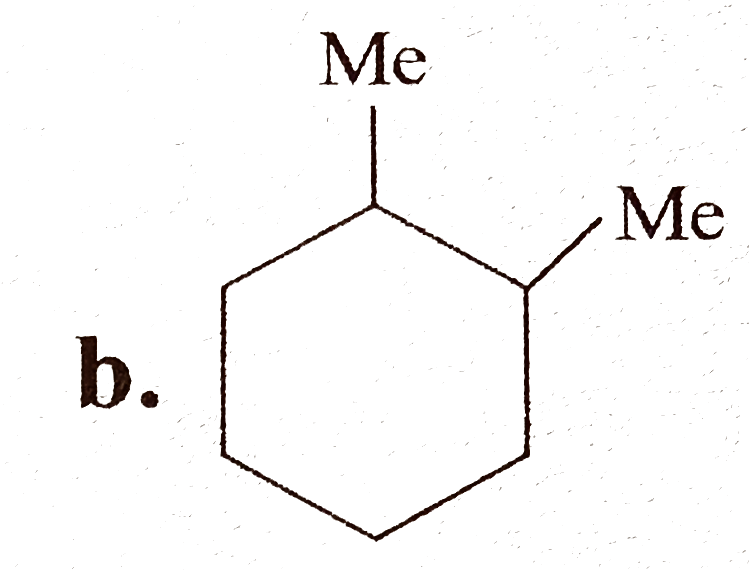The members of which of the following families shows Kranz anatomy?
(a) Compositae and Amaranthacease
(b) Chenopodiaceae and Euphorbiaceae
(c) Gramineae
(d) All of these
Compositae and Amaranthacease
Chenopodiaceae and Euphorbiaceae
Gramineae
All of these
The correct Answer is:D
To determine which families show Kranz anatomy, we need to understand what Kranz anatomy is and which plant families exhibit this characteristic.
1. Understanding Kranz Anatomy:
- Kranz anatomy is a specific type of leaf structure found in C4 plants. It is characterized by the presence of two types of cells: mesophyll cells and bundle sheath cells.
- In Kranz anatomy, mesophyll cells are arranged in a ring-like fashion around the bundle sheath cells.
2. Function of Kranz Anatomy:
- This anatomical arrangement helps in the efficient concentration of carbon dioxide and minimizes photorespiration, which is beneficial for plants in hot and dry environments.
3. Identifying Plant Families:
- The question lists several plant families:
- (a) Compositae and Amaranthaceae
- (b) Chenopodiaceae and Euphorbiaceae
- (c) Gramineae
- (d) All of these
4. Researching Each Family:
- Compositae (Asteraceae): Known to include many C4 plants.
- Amaranthaceae: Also contains C4 plants with Kranz anatomy.
- Chenopodiaceae: Includes species that exhibit Kranz anatomy.
- Euphorbiaceae: Some members also show Kranz anatomy.
- Gramineae (Poaceae): This family includes many grasses that exhibit Kranz anatomy.
5. Conclusion:
- Since Kranz anatomy is found in all the mentioned families, the correct answer is option (d) All of these.
Final Answer:
(d) All of these
- Kranz anatomy is a specific type of leaf structure found in C4 plants. It is characterized by the presence of two types of cells: mesophyll cells and bundle sheath cells.
- In Kranz anatomy, mesophyll cells are arranged in a ring-like fashion around the bundle sheath cells.
- This anatomical arrangement helps in the efficient concentration of carbon dioxide and minimizes photorespiration, which is beneficial for plants in hot and dry environments.
- The question lists several plant families:
- (a) Compositae and Amaranthaceae
- (b) Chenopodiaceae and Euphorbiaceae
- (c) Gramineae
- (d) All of these
- Compositae (Asteraceae): Known to include many C4 plants.
- Amaranthaceae: Also contains C4 plants with Kranz anatomy.
- Chenopodiaceae: Includes species that exhibit Kranz anatomy.
- Euphorbiaceae: Some members also show Kranz anatomy.
- Gramineae (Poaceae): This family includes many grasses that exhibit Kranz anatomy.
- Since Kranz anatomy is found in all the mentioned families, the correct answer is option (d) All of these.
(d) All of these
Topper's Solved these Questions
- PHOTOSYNTHESIS IN HIGHER PLANTSBOOK - CENGAGE BIOLOGY ENGLISHCHAPTER - PHOTOSYNTHESIS IN HIGHER PLANTSEXERCISE - ASSERTION -REASONING QUESTIONS
5 Videos
- PHOTOSYNTHESIS IN HIGHER PLANTSBOOK - CENGAGE BIOLOGY ENGLISHCHAPTER - PHOTOSYNTHESIS IN HIGHER PLANTSEXERCISE - ARCHIVES
30 Videos
- NEET 2018 PAPERBOOK - CENGAGE BIOLOGY ENGLISHCHAPTER - NEET 2018 PAPEREXERCISE - MCQ
48 Videos
- PLANT GROWTH AND DEVELOPMENT BOOK - CENGAGE BIOLOGY ENGLISHCHAPTER - PLANT GROWTH AND DEVELOPMENT EXERCISE - Archives
28 Videos
Similar Questions
Knowledge Check
Which one of the following is a member of halogen family?
ACuBCrCClDCa
Which type of plants show Kranz anatomy?
View SolutionWhich of the following is valid name for Gramineae family :-
View SolutionWhich of the following members show the same number of chromosomes in their gametes ?
View SolutionWhich of the following members show the same number of chromosomes in their gametes ?
View SolutionIn which of the following option members of the same family are present?
View SolutionWhich of the following member of fabaceae family has medicinal use?
View SolutionWhich of the following is not a member of 3d-transition series ?
View Solution




